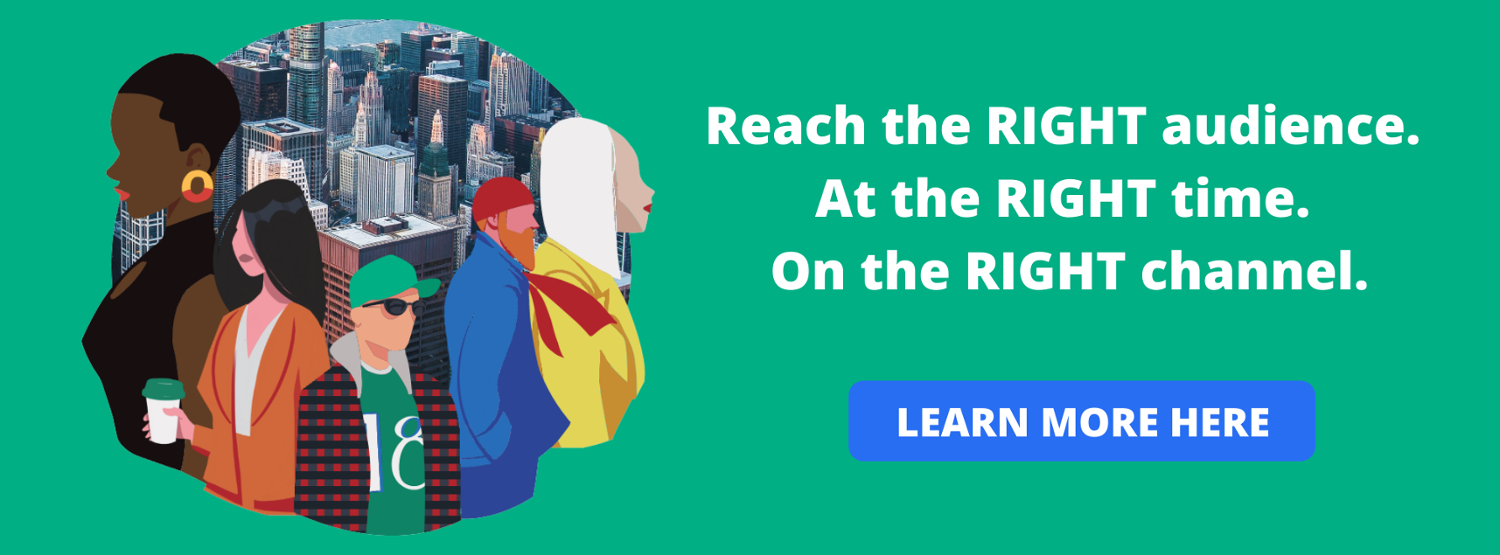We’ve been using the phrase “multi-channel messaging” a lot lately, and many people have been asking us to clarify what that actually means. So, in this article, we will take a deep dive into this topic and clear up any questions you may have about it.
Ready?
Let’s get started…
_____
TL;DR watch this video:
“Don’t put all your eggs in one basket.”
It’s a maxim for a reason. Because it’s true — especially in the publishing world.
Publishers used to put all their eggs in one basket, like Facebook or Google. Then they realized that meant relinquishing their data behind walled gardens and being subject to ever-changing algorithms and soaring ad prices.
Now they’re understanding the importance of building direct relationships with audiences and reaching them across their favorite channels — not just on one monopolizing platform.
That’s where multi-channel messaging comes in as a must-have component for your audience engagement and monetization strategies.
Here’s what you need to know.
What is multi-channel messaging?
Multi-channel messaging involves providing personalized content to audiences across channels, such as text messages, email, push notifications, social media, and web browsers. It’s not to be confused with multi-channel marketing, which is using different distribution and promotional channels for the purpose of marketing.
For publishers, this kind of business messaging is the key to reaching consumers on their favorite digital platforms with the content that matters most to them. Instead of saying, “I’ll just blast all these messages on Facebook and hope some people see them,” you can say, “I’ll reach this individual reader directly in their inbox or messaging channels with this new content I know they’ll love.”
Let’s look at an example. Say you run a website with news articles for the business industry. You’re about to publish an article featuring an interview with a cybersecurity subject matter expert. Wouldn’t it be great to notify readers specifically interested in cybersecurity topics once that article goes live? And wouldn’t you want to reach them where they’re already active, like on their web browsers and in their emails? With multi-channel business messaging, you can.
Why is a thorough messaging strategy important?
Multi-channel messaging is important for many reasons.
Reach consumers across multiple platforms
Most people use multiple channels when consuming content, interacting with brands, and making purchase decisions — 73%, according to Harvard Business Review. So you should use multiple channels to reach your audience.
Once you invest in cross-platform business messaging, you might also discover valuable channels you hadn’t considered. For example, 72% of people use push notifications on their browsers and smartphones to receive real-time updates from their favorite websites and apps. There is an added benefit in reaching customers via messaging channels, including text messages and Facebook messenger.
But as a messaging channel, push notifications are still overlooked by publishers. Meaning there’s a big opportunity for you to swoop in and engage captive audiences with opt-in content.
Check out this video with our CEO, Jeff Kupietzky, in which he discusses content targeting and more:
Build a comprehensive view of each customer to increase revenues
When you expand your business messaging operation beyond just one or two messaging channels, you give yourself the ability to gather customer data from their experiences across the web. This allows you to better understand consumer behaviors and interests, and more effectively tailor your messaging to each user and audience segment. Doing this will help you provide a great customer experience.
Messaging across platforms can also play a key role in your monetization strategy to help you meet your bottom line and fund your content operation. With the right tools, you can deliver hyper-targeted ad content alongside your messaging, such as with native ads and display ads, that caters to audience interests and needs.
How do you do multi-channel business messaging?
It’s not running a bunch of splintered operations that never connect. Remember one of the biggest benefits of this kind of business messaging is reaching consumers across touch points so you can engage them in the right places, at the right time, with personalized messaging. To do that, you need to break down internal silos and run your messaging from one, unified platform.
For that to work seamlessly, you need a centralized platform that can automatically analyze your content and user behavior to build smart consumer profiles. Your platform should then match relevant content to user interests in real-time, and send that content directly to each audience member via their favorite channel — be it SMS messages, email, push notifications, or web.
And that’s just for subscribed users.
For unsubscribed users, your platform should be able to analyze their past behavior and propose the best subscription call-to-action on their favorite messaging channels so they can become loyal readers. Once they subscribe, they’ll receive content that matches their interests across platforms.
Finally, your platform should have the capability to monetize your messaging with ad servers, analytics and reporting tools, and CPM-style tracking. You’ll want to use these features to complement your messaging strategy with relevant direct-sold and programmatic ads that enhance the consumer experience and, of course, help you drive revenue.
How can you get started?
No headaches needed. Switching to this robust advertising strategy provides so many benefits that you should be able to launch your messaging, sit back, and reap the benefits of your cross-platform content.
That’s where Jeeng comes in.
Built exclusively for publishers, Jeeng is the all-in-one business messaging platform for generating audience engagement, improving customer experience, and driving revenue. We help you manage and monetize your messaging in one place so you can reach customers via the highest-converting digital channels — including email, push notifications, web, and emerging platforms that are ripe with opportunity.
Ready to start building your strategy? Reach out today.
The Top 3 Frequently Asked Questions About This Advertising Approach
1. What does a multi-channel messaging strategy look like?
A multi-channel messaging strategy goes across your website, email newsletters, push notifications, and other communication channels like Apple News, SMS, WhatsApp, Facebook Messenger, etc. People rarely change their email addresses, so if you use that as a unique identifier, you can track opt-in user behavior across all these channels in order to serve them highly targeted content and advertisements that are relevant and valuable — where they want it, and when they are most likely to engage with it.
2. Which content is personalized in multi-channel messaging?
Both your own content (articles, blog posts, stories, etc.) and advertisements are personalized to each individual’s interests and preferences with multi-channel messaging. By creating content delivery settings based on user data, you can send highly relevant content and ads straight to your audience through various messaging channels.
3. How is my content curated so it gets to the right person at the right time on the right messaging channel?
Most publishers do not have the resources to do this themselves. You would need to work with a multi-channel messaging platform like Jeeng. Jeeng’s Javascript code snippet is placed on your website where it gathers first-party, opt-in data on your audience based on their usage and behavioral patterns — basically it tracks the way readers interact with your site’s content. The Jeeng algorithm then parses the data and sends readers personalized content accordingly, keeping them satisfied and engaged.




